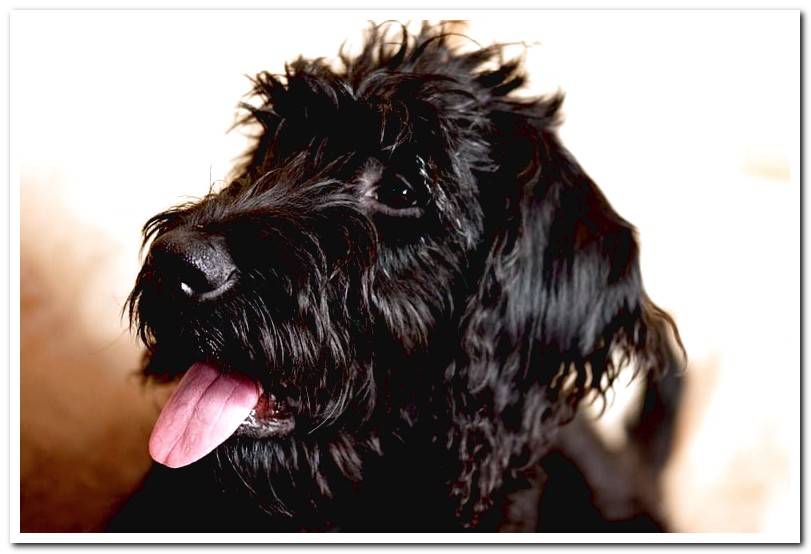
Panting is one of the ways a dog can breathe. Surely we have observed it in some situation, since it is usual when the animal is heated or after having carried out intense activity.
But panting can also tell us that the dog is sick. In fact, it is a sign that is related to very serious health problems. Below we will explain in which cases panting is normal and when alarming.
Index of contents
- 1 What is panting?
- 2 Why are my dog panting? He is sick?
- 2.1 When the pant is normal
- 2.2 When gasping is troubling
- 3 What do I do if my dog is panting a lot?
What is panting?
Gasping is quick, open-mouth breathing. The dog usually breathes through the nose, with its mouth closed and taking between 10 and 30 breaths per minute. Not all accelerated breathing is a gasp, so we should not confuse both situations.
Excessively rapid breathing may indicate that the dog is anxious, sore, or he has fever. These situations are pathological, on the other hand, panting fulfills a physiological function, as long as there are no other circumstances. We will explain it in detail in the following sections.

Why are my dog panting? He is sick?
Panting is the main way for the dog to lower its body temperature. Remember that the dog only have sweat glands in the pads of the legs, so sweating is not your priority option to cool off.
When panting, the fully open mouth allows hot air from inside the body to be exchanged for cooler air from the atmosphere. This manages to reduce the temperature.
On very hot days, the ambient temperature will be similar to that of the body. This makes cooling off by panting too ineffective. Added to the fact that dogs do not sweat, we must pay special attention to their well-being on sunny days to avoid a heatstroke.

When the pant is normal
Given the physiological function of panting, it is normal for us to observe it in our dog in situations in which we would sweat. For example, being hot, exercising intensely, or having a fever.
Due to heat or after exercise, the dog gasps but is well and in a short period of time will breathe normally again. When the dog has a fever it is common for it to show some other sign of illness. It is reason for veterinary consultation.
When gasping is troubling
Outside of the physiological situations in which the panting appears, if it does not remit or we perceive signs in our dog that make us suspect that it is not well, we should seek veterinary assistance since we could be in situations as serious as the following:
- Shock: With this term we refer to a state of insufficient blood supply and low amount of oxygen. It can cause bleeding, heart failure, anaphylaxis, dehydration, intoxication, sepsis, etc. The warning signs are gasps, tachycardia, congestion of mucous membranes that later turn pale, hypothermia or unconsciousness.
- Heatstroke: in addition to intense panting we will appreciate respiratory difficulty, thick saliva, vomiting, fever, internal bleeding, gray mucosa, shock, collapse, seizures or coma. It is very serious, it must be treated immediately and even then it can be fatal.
- Dehydration: It happens when the body is not able to replace the body fluids it loses. It is usually caused by severe vomiting and severe diarrhea, but it is also caused by major illness, heat stroke, or fever. If we pull on the skin of the back and it does not recover its shape immediately, our dog is dehydrated.
- Diabetic cetoacidosis: It is due to an increase in blood glucose with the accumulation of ketones, which are products derived from the metabolism of fats. Causes general weakness, vomiting, and breath smelling of acetone. It is a veterinary emergency.
- Poisonings: they also produce other symptoms such as depression, respiratory distress, hypersalivation, vomiting even with blood, diarrhea, general weakness, incoordination, tremors or convulsions. The prognosis depends on the toxic, the characteristics of the dog, the amount with which it has contacted or the speed in receiving assistance.
- Pleural effusion: it is the accumulation in the thorax of blood or serum due to different causes. We will notice that the dog breathes with its mouth open, it has blue mucous membranes, it remains still standing or sitting, in a position to try to get oxygen. You have to transfer it with caution to the vet because it could collapse with any effort.

What do I do if my dog is panting a lot?
Pathological panting is an indicator of serious ailments, therefore, as soon as we identify it, our first reaction should be to contact the vet. And it is very important that we do it quickly, since pathologies such as heat stroke, severe dehydration or poisoning can be fatal in a very short time.
